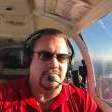Fuel Sending Units
-
Members Online
- Parker_Woodruff
- Echo
- VetRepp
- WilliamR
- jlunseth
- LANCECASPER
- glbtrottr
- 201er
- Sabremech
- mariosmt
- Stetson20
- kortopates
- acekng1
- redbaron1982
- A64Pilot
- Mooneyintn
- FlyMoe
- tankles
- WAFI
- Aerodon
- Captainhog
- whiskytango
- Joe Linnebur
- wivika2537
- Marcopolo
- Ragsf15e
- ckb
- Skyhighguy
- Jblanton
- natdm
- EricJ
- dkkim73
- donkaye
- Lax291
- BartReed


Recommended Posts
Join the conversation
You can post now and register later. If you have an account, sign in now to post with your account.